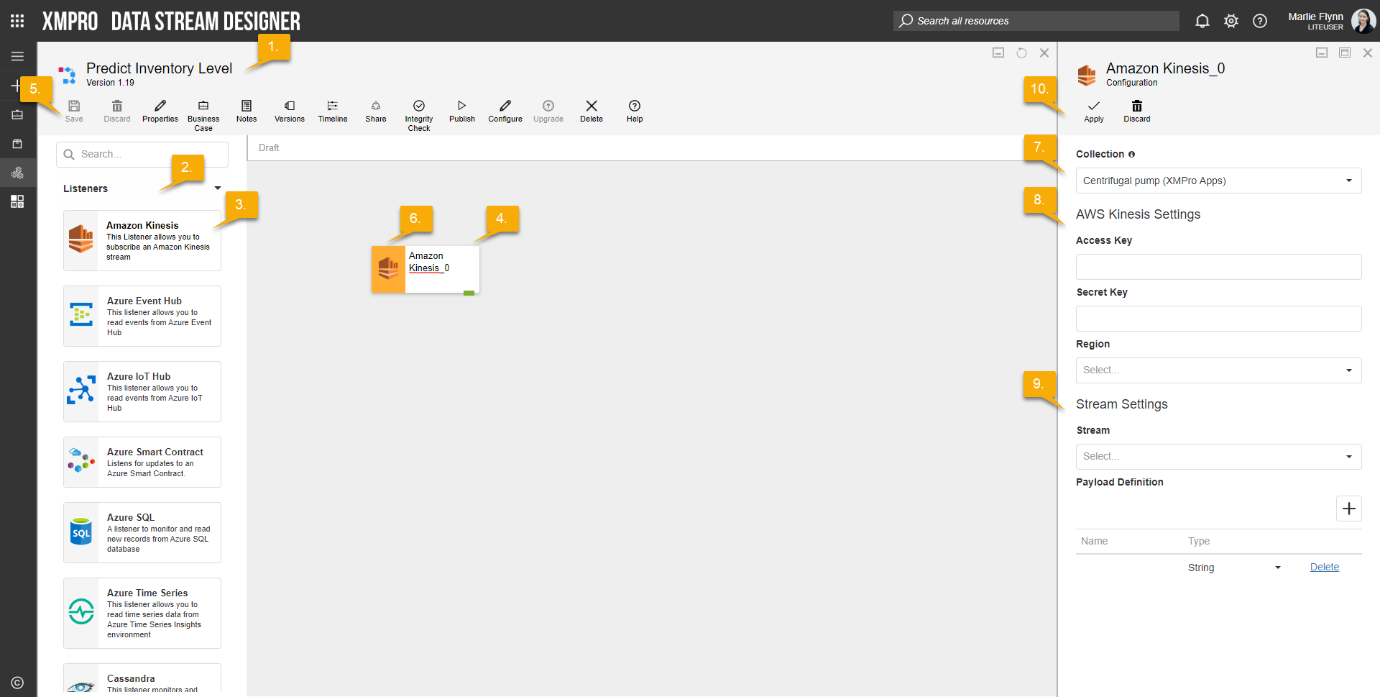
Description
The Amazon Kinesis Listener allows users to subscribe to an Amazon Kinesis Stream.
Limitations
- None at this time.
Release Notes
| Version: | 1.1 |
| Released: | 28-Feb-2020 |
| Release Notes: | Streamlined Code |
An Amazon Kinesis environment needs to be created before you can consume it with the listener (click here for instructions)
Configuration
To add the Amazon Kinesis listener to a stream, follow the steps below:
- Ensure you have a use case open in the stream designer, this can be a new use case or an existing use case
- From the tool box on the left expand the Listener option and scroll down until you can see “Amazon Kinesis Listener”
- You can also use the search in the header to find the stream object quickly
- Click and drag the Amazon Kinesis listener from the toolbox onto the canvas
- Rename the listener by clicking into the text area to the right of the icon
- Save the Stream by clicking the save button in the action bar
- Hover over the icon for the stream object until it turns orange and then double click to open the configuration page
- You can optionally use the configure option on the action bar once you have selected the specific stream object and then clicking this option
- Configuration options
- The drop down allows you to associate this stream object with a specific collection. The default option is derived from the default specified against the specific use case and is generated left as the same option. If you do need to change it to another collection make the change by selecting the new collection in the drop down.
- AWS Kinesis options
- Enter the Access Key
- Enter the Secret Key
- Select the Region from dropdown list
- Stream Settings options
- The Stream from dropdown list
- Add/Delete Payload Definition. Name and type could be specified.
- Click Apply on the action bar, and then save the stream using the save button

